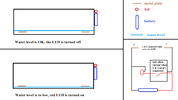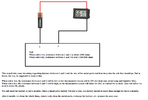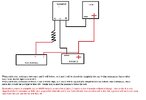SentinelAeon
Member
I am trying to make an easy way to alert me when i need to water a plant - a red led light. For now i am trying to do it without external power or solar panels - batteries only. I have everything figured out except the element that will detect when contact between 2 points in soil no longer conduct electricity and switch on the led light powered by battery.
I could do that using a relay, but relay consumes a lot of energy, it would drain a battery very soon. I would like to keep the energy usage zero or minimal unless the led light needs to shine. In a way i would need 2 elements:
1) something like relay, but made for small currents that uses very little electricity
2) a negation element of sorts - because lets say i have a relay, when current can flow between 2 points in soil (water level OK), it can therefor be used to switch on the relay and the led light will turn on. But that is not what i need - i need the exact opposite, i need the relay to turn on when current cannot flow between 2 points.
The solution is probably very obvious to most with knowledge, i hope you can direct me in the right direction.

I could do that using a relay, but relay consumes a lot of energy, it would drain a battery very soon. I would like to keep the energy usage zero or minimal unless the led light needs to shine. In a way i would need 2 elements:
1) something like relay, but made for small currents that uses very little electricity
2) a negation element of sorts - because lets say i have a relay, when current can flow between 2 points in soil (water level OK), it can therefor be used to switch on the relay and the led light will turn on. But that is not what i need - i need the exact opposite, i need the relay to turn on when current cannot flow between 2 points.
The solution is probably very obvious to most with knowledge, i hope you can direct me in the right direction.




